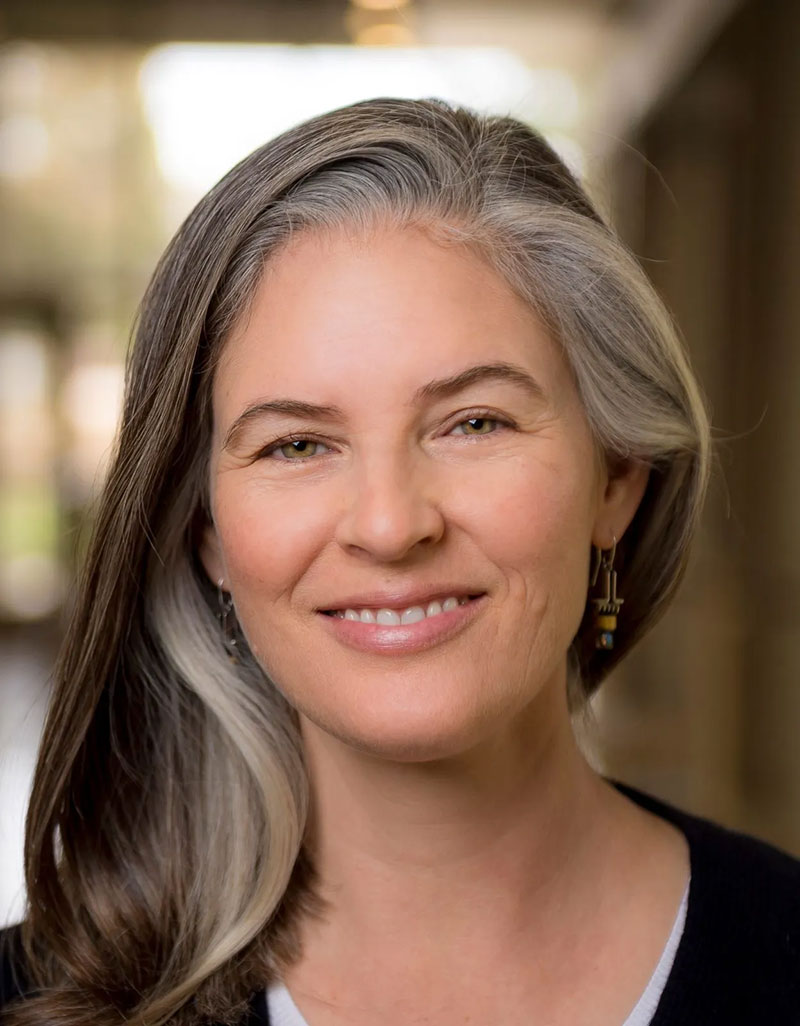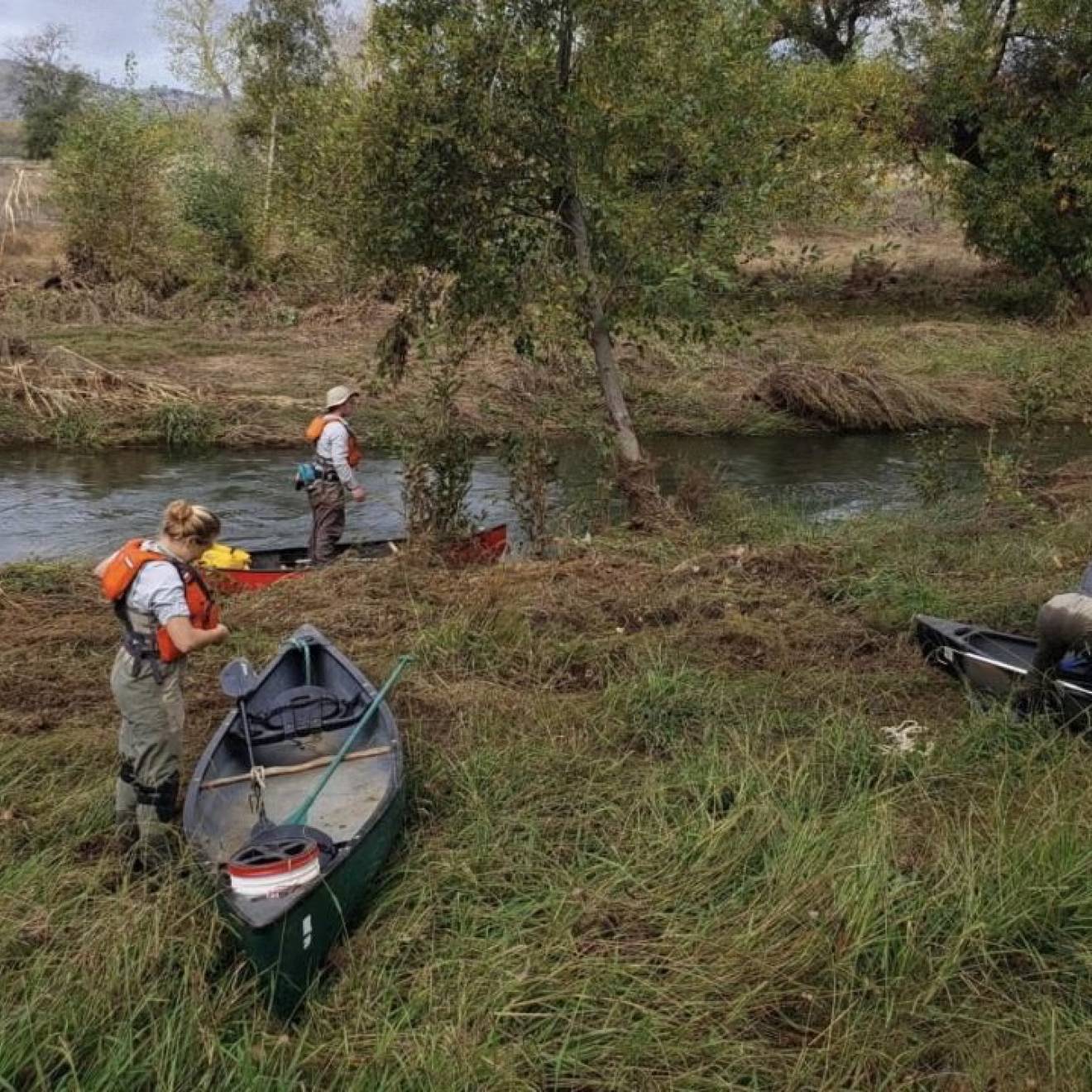Kathleen Wong, UC Natural Reserve System
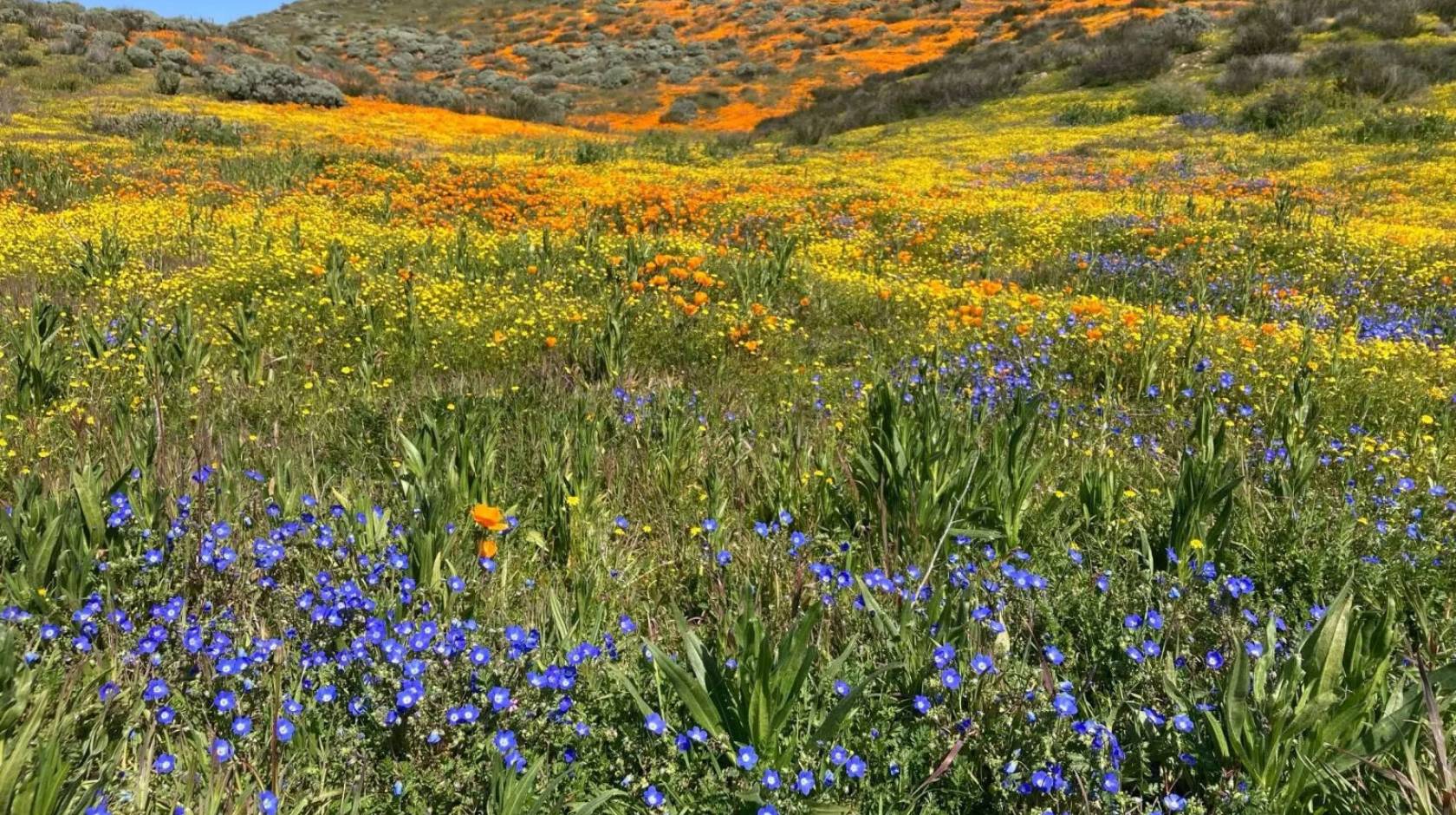
The incandescent orange flowers of the California poppy light up meadows across the Golden State. The fact that this one species is found from hot, dry San Diego all the way to the cool, rainy Klamath Mountains points to a special power: the capacity to adapt to a phenomenally broad range of conditions.
In an era of rapid climate change, the ability to adjust to local surroundings is a valuable talent. Yet the potential for species to adapt has largely been ignored to date. Most models predicting where plants will be found in the future assume species can persist only within the same range of conditions, or climate envelope, they occur in now.
Yet that envelope is far more restrictive for a single plant. “An individual is unlikely to be able to exist across the entire climate space where the species is found,” Cleland says. This means a poppy that hails from wetter, cooler Northern California might not be able to endure in places where Southern California poppies thrive, even though the two technically belong to the same species.
To power today’s plant distribution models, researchers have embarked on a study of a model species found across the UC Natural Reserve System: California poppies. Professors Elsa Cleland of UC San Diego and Jason Sexton of UC Merced will quantify genetic diversity using seeds collected from widespread wild populations, and monitor the fates of those populations in the wild. The results will highlight how genetic diversity, and rates of gene flow, affect plant success. University of Connecticut Professor Cory Merow will then incorporate this experimental data into a more sophisticated distribution model that factors in processes such as adaptation and survival. The study will update a critical tool for plant conservation, and guide efforts to ensure native plants survive the environmental upheavals forecast for the twenty-first century.
“We want to be able to predict how species are likely to adapt to climate change. We think we can gain clues about that from the existing variation we see across species ranges,” Cleland says.
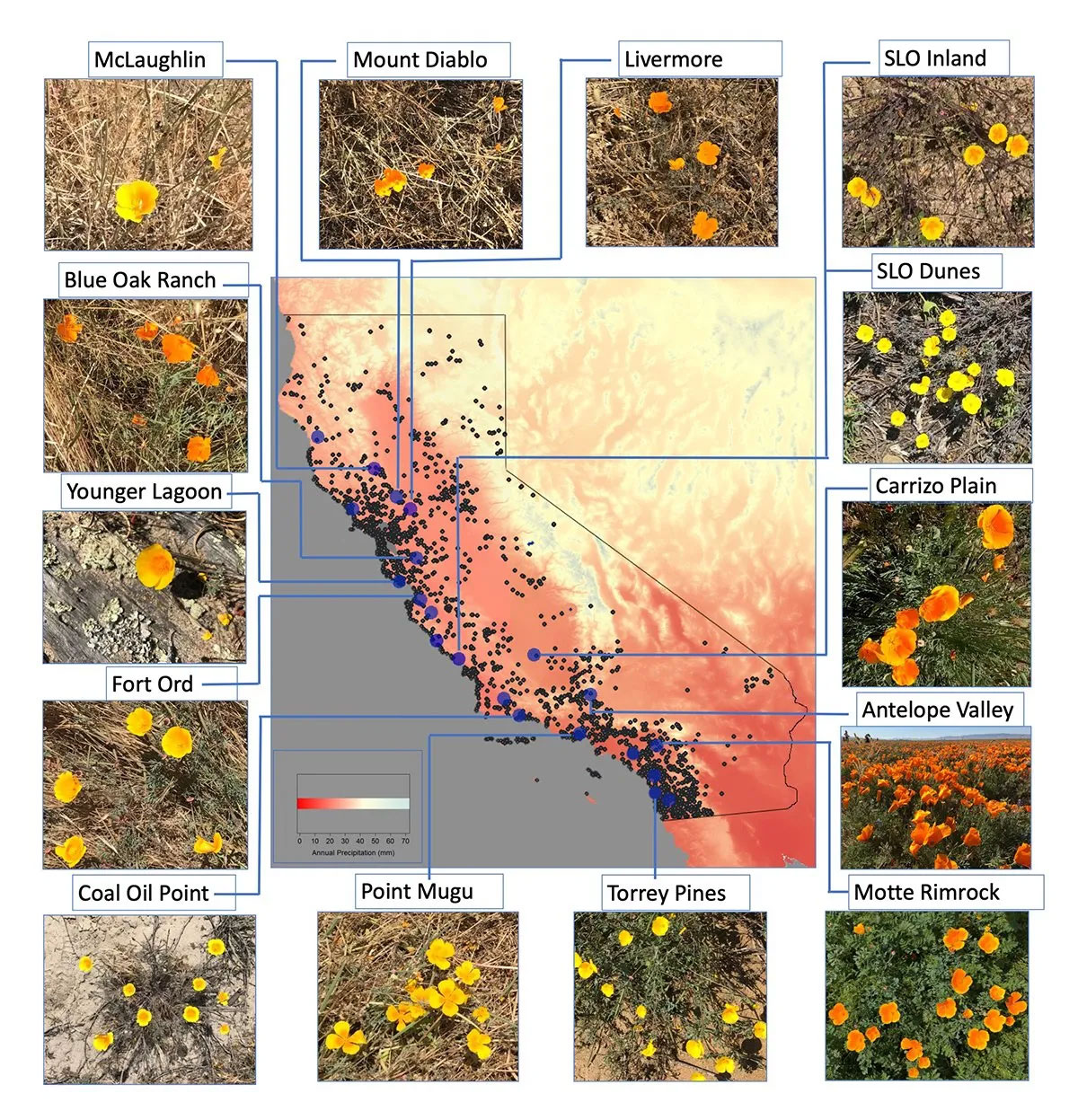
Different climes, different guises
The California poppy is a wizard at adapting to local conditions. In warmer Southern California, clouds dry up earlier in the year and plants must wrap up their reproductive cycles fast. As a result, southern poppies tend to be annual (dying after just one growing season), invest less energy into root growth, and produce seeds that can lie dormant for years awaiting hospitable growing conditions. Northern plants, by contrast, tend to be perennial, grow deep and hearty roots, and make seeds that will germinate during the very next rainy season.
These and other traits occur in gradients across the state, as pollen and populations mix. With their poppy project, the researchers can zero in on how that mosaic of genetic variation affects adaptation.
“We suspect that a lot of the genetic variation, the raw ingredient for adaptation, is actually arrayed across populations rather than within populations,” Cleland says. “As those genes are flowing back and forth, these different ecological strategies are integrating.”
Variation within a population
The flow of genes contributes to the genetic variation contained within a population. Access to genetic variety may be key to surviving climate change, because the genetic variation within a population constitutes its potential to adapt. Just as the hand a poker player is dealt can determine whether she will win or lose, the array of genes a population can draw from dictates its possible responses to novel conditions.
Statistician and biologist Ronald Fisher took this idea one step further back in the 1930s. His fundamental theorem of natural selection claims that a more diverse, but poorer-performing, population should adapt better to changing conditions than a less diverse population already optimized for the present environment.
In Fisher’s concept, a diverse population is akin to a Swiss army knife. While a multitool isn’t the best gadget for opening a tin of beans or cutting meat, it can accomplish a wider variety of tasks than a can opener or a steak knife alone.
Sampling California gold
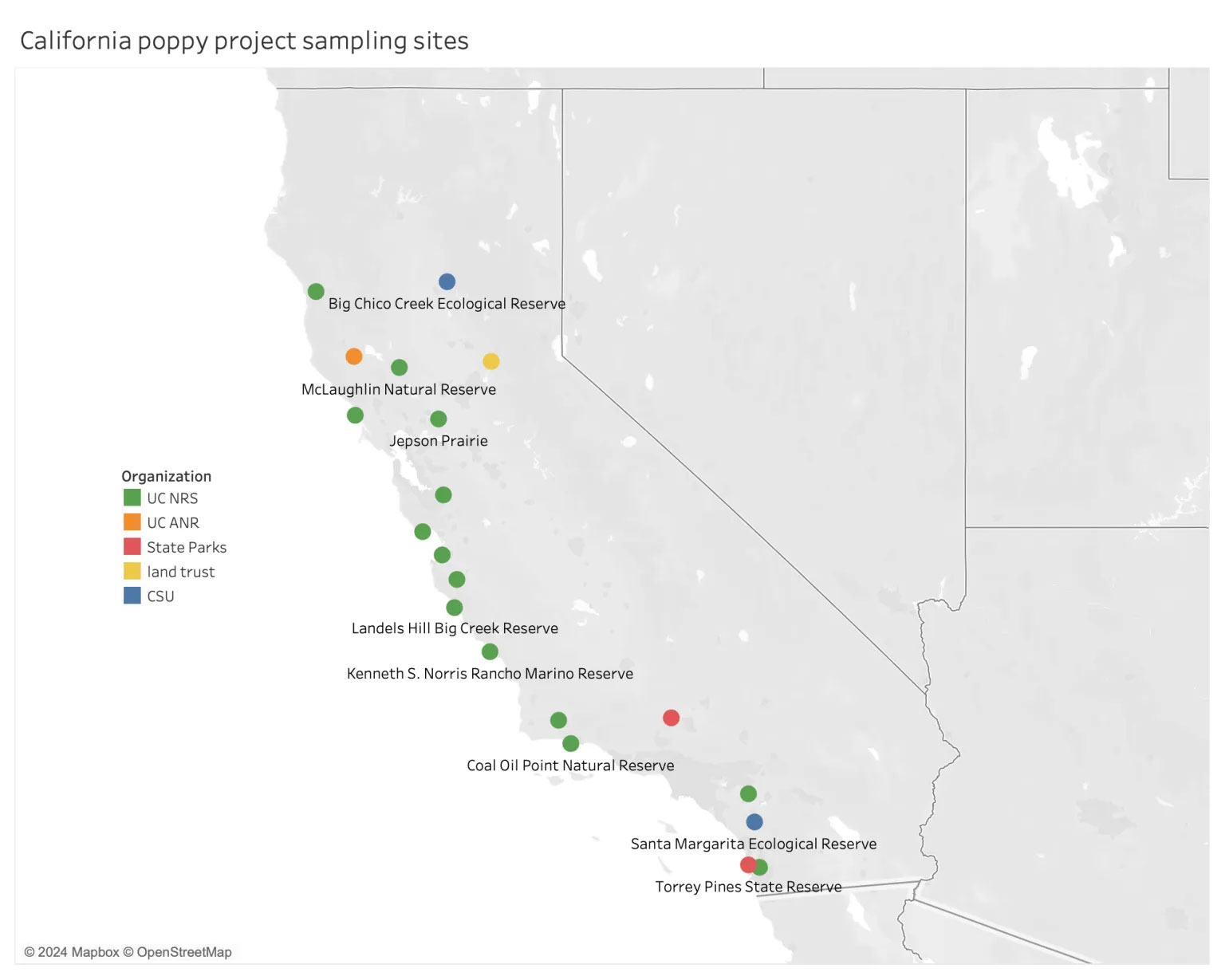
Cleland and Sexton will scrutinize Fisher’s theorem with poppy power. Last year, they collected poppy seeds from 20 sites across California. Locations included 15 UC Natural Reserves; two California State University reserve sites, two state parks, and one land trust. The NRS reserves sampled include Angelo Coast Range Reserve, Blue Oak Ranch Reserve, Bodega Marine Reserve, Coal Oil Point Natural Reserve, Elliott Chaparral Reserve, Fort Ord Natural Reserve, Hastings Natural History Reservation, Jepson Prairie Reserve, Kenneth S. Norris Rancho Marino Reserve, Landels-Hill Big Creek Reserve, McLaughlin Natural Reserve, Motte Rimrock Reserve, Sedgwick Reserve, and Younger Lagoon Reserve.
Because poppies are ubiquitous across much of California, the researchers could have done their experiments nearly anywhere wild Eschsholzia californica populations grow. They opted to work largely within the NRS. “The NRS makes it so much more likely that this project can happen: It’s easy to get access and permission to do research on reserves,” Sexton says. “With 20 populations you have to visit two or three times a year, getting permission from different entities would take forever.”
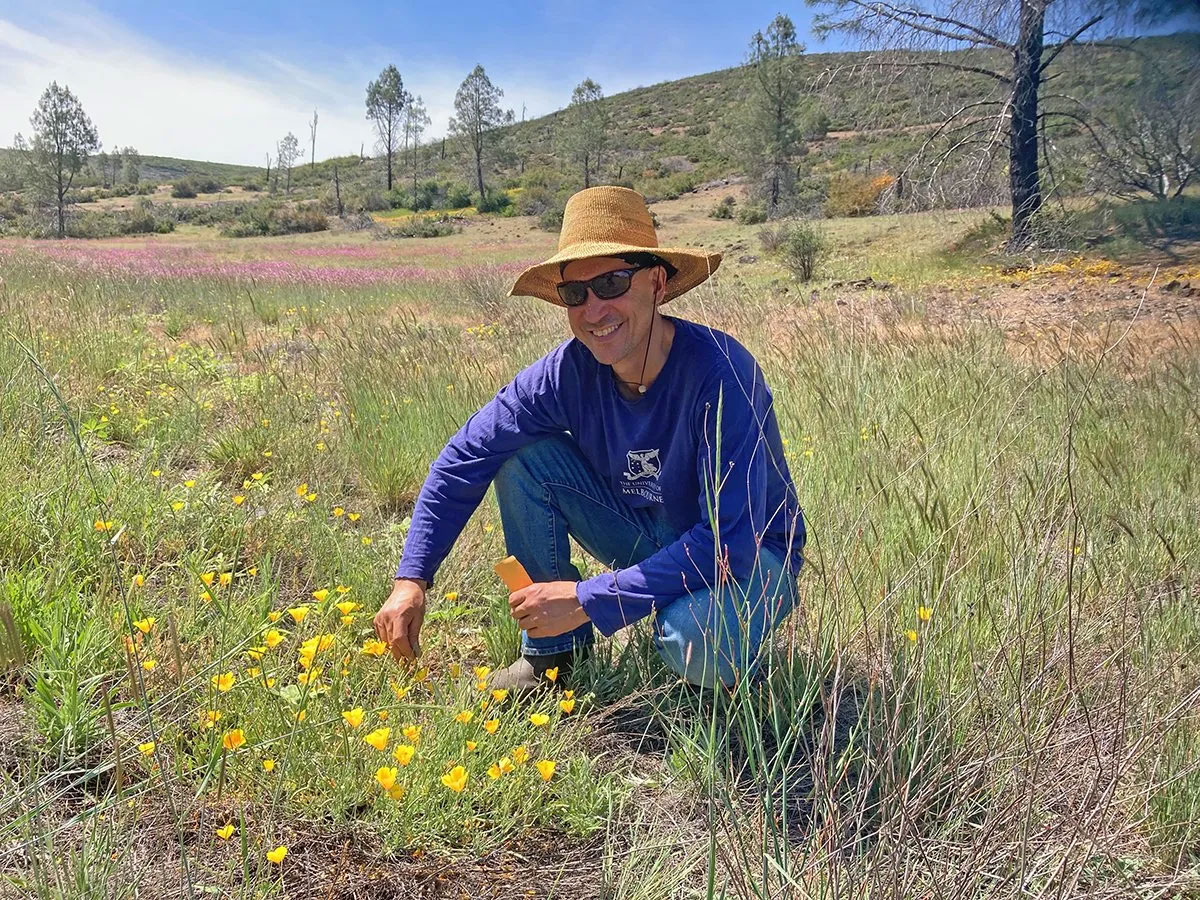
Following in Mendel’s footsteps
After growing their collected seeds in a greenhouse, the scientists carefully crossed plants within each population. Tracking plant pedigrees enables the researchers to quantify genetic variation within the populations.
The researchers will then plant their crossbred seeds at UC San Diego and UC Merced, sites with distinct climates. This will demonstrate how well the seeds perform across a range of different environmental conditions. Eventually, the researchers plan to make “long-distance” crosses between their experimental populations, to simulate how enhanced gene flow could influence plant adaptation to climate change.
“This will give us a sense of how different types of gene flow—long distance versus short distance, and across similar and distant climates—affect the offspring,” Sexton says.
Populations long separated can sometimes run into problems reproducing. Chromosomal incompatibilities may cause offspring to be less competitive. This is why mules, the hybrid offspring of a horse and a donkey, tend to be sterile.
A better way to predict population success
In addition to the experimental populations, Cleland and Sexton are monitoring the wild populations over time. As these plants produce progeny in successive seasons, the scientists will count the numbers of flowers, seed heads, seedlings, and adult plants in each plot over each growing season. These demographic data are measures of survival and reproductive success
Cleland and Sexton will also collect demographic data from the wild poppies at the 20 reserve, land trust, and park sites over four years. Once they have all of the demographic information in hand, the UC researchers will share the information with co-investigator Merow. Merow will use these data to create a tool called an integral projection model, or IPM, that can predict poppy survival.
“Integral projection models have been used to model how well a population is doing under different scenarios. They can take measures of survival and reproduction within a population, and say, this population is probably going to persist, and this population is probably winking out right now,” Cleland says.
This next-generation species distribution model could then be applied to plants that, unlike the California poppy, are threatened with range shifts and extinctions due to global warming. More crossbreeding experiments and a new IPM would need to be conducted for each new species. But the poppy project would demonstrate how this new approach can help scientists preserve the genetic variation that organisms will need to weather an era of tumultuous environmental change.
Insights for conservation
The scientists say the project will also reveal better ways to manage plant conservation. For one thing, the results of the crossbreeding experiments should help scientists understand how best to preserve genetic variation in species. “Is introducing genes from a population 50 miles away much better in terms of enhancing adaptive capacity than a population 200 miles away?” asks Cleland.
The study will likely also reveal that conserving populations across a wide geographic sweep is important for species survival. “Protecting adaptive capacity doesn’t just mean protecting one big population in the center of the range. That’s not going to protect the genetic diversity needed for adaptation. It means that every local park or canyon is protecting the adaptive capacity of the species that live there,” Cleland says.
Whatever the final results, the poppy project showcases the importance of considering adaptation in the fight to preserve vanishing species for tomorrow. “We’re just beginning to understand how this genetic variation is spread throughout species ranges. We really are in the beginning days of understanding how that works and what nature holds in terms of its tools and its tricks,” Sexton says.
Related link
